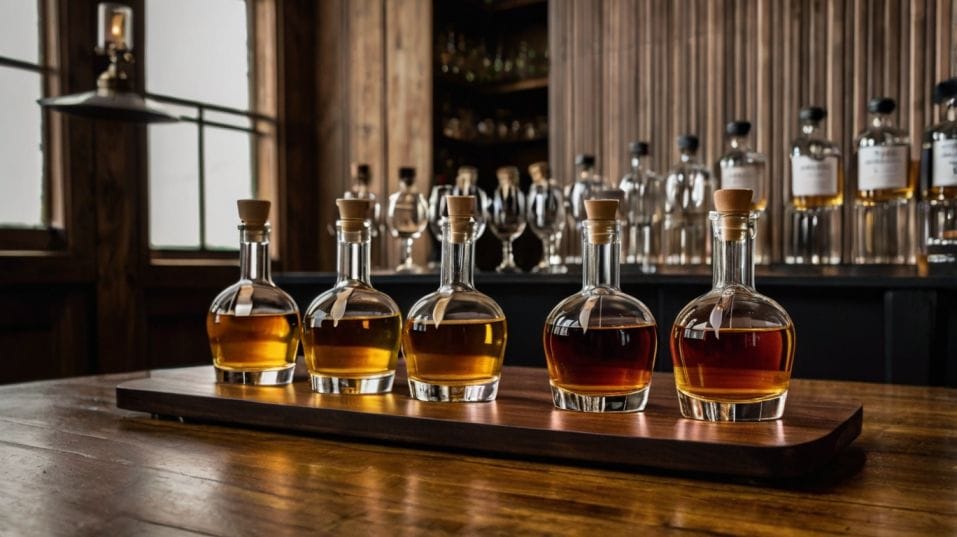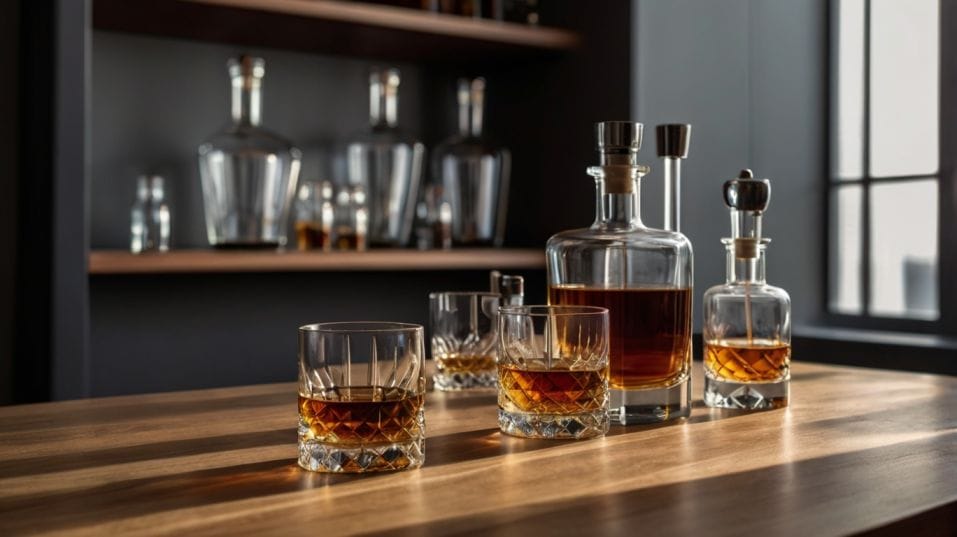Understanding ABV and Proof in Whiskey
Learn how ABV and proof shape whiskey’s taste, feel, and depth—perfect for new drinkers ready to explore smarter and sip with purpose.

What if the numbers on your whiskey bottle could unlock deeper flavor, sharper judgment, and a better drinking experience? If you're new to whiskey or just starting to take it seriously, understanding ABV and proof is essential.
They’re not trivia—they’re tools. Get them wrong, and you’re drinking blind. But learn how they shape taste, texture, and strength, and you’ll go from casual sipper to confident explorer in every pour.
ABV: Alcohol by Volume, Backbone of Flavor
Alcohol by volume (ABV) is more than a technicality. It’s the backbone of how whiskey behaves in the glass, on your tongue, and through the finish. ABV tells you what percentage of the liquid is alcohol.
If your bottle says 46% ABV, that means 46% of what you’re drinking is ethanol—the rest is water, congeners, esters, oils, and all the elements that give whiskey its complexity.
Most commercial whiskeys fall somewhere between 40% and 65% ABV. But don’t make the rookie mistake of assuming that stronger means better—or that lower means lesser. It’s about intention and effect.
At 40–43%, you’re often dealing with “entry proof” or standard bottlings. These tend to emphasize softness, balance, and approachability.
You’ll find them smoother on the palate, with less alcohol heat, making them ideal for neat pours, beginner tastings, or casual sipping.
But what you gain in ease, you may lose in intensity. Some of the bolder flavors—rich spice, toasted oak, high-toned fruit—can get muffled. That’s not a flaw, it’s a profile. But it pays to recognize it.

Push past 46% ABV and you’re entering higher-proof territory. Here, flavors sharpen. Aromas bloom. The spirit holds more weight, more punch, and often more complexity. But that power comes with responsibility.
Higher ABV doesn’t forgive sloppy technique—either from the distiller or the drinker. Without a developed palate or proper aeration, high-proof whiskey can overwhelm your senses and flatten the experience.
Still, when a high-ABV whiskey is well-made, it gives you full control. You can add water. You can let it breathe. You can explore the layers as they unfold over time, rather than being limited by what’s already been diluted.
If you’re chasing flavor—and not just comfort—start learning how to work with strength.
Proof: History’s Echo, Still in Play
Proof is the old-world cousin of ABV—twice the number, same message. A whiskey with 50% ABV is 100 proof. In the U.S., this labeling system is still standard, more a legacy than a necessity. But it’s not useless.
Knowing proof can help you navigate quickly. A bottle marked “120 proof” is signaling high ABV, cask strength, and likely an untamed experience. A “90 proof” expression is telling you it’s been diluted with care, aimed at balance.
The Origins of Proof
Historically, “proofing” came from British tax practices and sailor habits—testing alcohol content by lighting it on fire. If it ignited, it was at or above “proof.”
These days, we don’t need fire to confirm the strength. But we still use the term to describe the character of a bottle. For the modern drinker, proof serves as shorthand for presence.
Higher proof generally means more vivid flavor—but it can also mean more heat, more tannin, and more time required to get to the good part. Use it as a compass, not a scoreboard.
Why Strength Changes Everything
Here’s what matters: alcohol isn’t just alcohol. It’s a carrier of aroma, a driver of mouthfeel, and an amplifier of flavor. It dissolves compounds from the barrel that water alone can’t extract—think vanillin, lactones, spice oils.
It adds body. It changes texture. Too little, and a whiskey can taste watery. Too much, and it can feel aggressive or one-dimensional.
ABV impacts how a whiskey opens up, how long its finish lasts, how it behaves when you add water or ice. That’s real-world drinking. Pour a cask-strength bourbon at 62% and you’ll notice the fire right away.
But give it five minutes in the glass, add a few drops of water, and suddenly you’ve got layers: dark cherry, tobacco, maple, pepper. The heat softens, the depth emerges.
That’s why whiskey nerds don’t just sip—they watch. They nose, swirl, taste, dilute, retaste. They listen to the whiskey as much as they drink it.
A 40% Scotch might sing right out of the bottle—subtle, floral, balanced. A 56% rye might demand coaxing, but deliver a thunderstorm of flavor once tamed.
Knowing what to expect based on ABV gives you the edge. It puts you in charge of the experience.
Bottled at Cask Strength? Here’s What That Means
“Cask strength,” “barrel proof,” “natural strength”—these terms all mean the same thing: the whiskey hasn’t been diluted after aging.
It’s bottled at the proof it came out of the barrel, sometimes filtered for debris but otherwise untouched.
These expressions are often seen as more “pure,” not because they’re stronger, but because they represent the whiskey in its rawest form.
For collectors and connoisseurs, cask strength releases offer a closer view of the distiller’s intent and the barrel’s influence. They’re also highly customizable. Add a few drops of water and you’ve effectively created your own personal blend.
But don’t be fooled into thinking cask strength is always better. Poorly made high-proof whiskey can be brutal. Thin, bitter, overly hot. Quality matters more than numbers.
Choosing, Tasting, and Collecting with Confidence
The more you understand ABV and proof, the smarter your decisions get. You’ll stop buying based on packaging or hearsay. You’ll start tasting with context.
You’ll know why a 43% Japanese malt delivers elegance while a 59% American single barrel hits with power.
You’ll recognize that a 46% Irish whiskey was likely bottled non-chill-filtered—a sign of quality preservation. You’ll spot the 40% mass-market blends and understand why they drink soft but fall short on depth.
It’s not about snobbery. It’s about precision. About drinking better, not just drinking more.
As your collection grows, you’ll begin organizing around proof ranges, knowing when you’re in the mood for bold and when you want something gentle.
You’ll learn to listen to your palate’s limits. Some nights call for 90 proof. Others demand the full blast of 130. That’s the point. ABV and proof give you the controls. You decide how to use them.
Final Thoughts
ABV and proof aren’t background details—they’re front-line tools for serious whiskey drinkers. They shape how whiskey tastes, how it feels, and how you experience it from first sip to final note.
So don’t just admire the label. Engage with it. Next time you pour, check the ABV, then pay attention. Does the heat hit hard?
Does the flavor unfold in layers or fade too fast? Add water. Wait a few minutes. Revisit. Track how the whiskey evolves and how your perception shifts.
Try something higher proof than you’re used to. Or taste a lower-proof dram with fresh focus. Build your palate, not your collection. This is how whiskey stops being passive entertainment—and starts becoming skill.




